2017-04-06 - Nº 101
Editorial
Esta é a Newsletter Nº 101 que se apresenta com o mesmo formato que as anteriores. Se gostar da Newsletter partilhe-a!
Todas as Newsletters encontram-se indexadas no link.
Esta Newsletter tem os seguintes tópicos:
Faz hoje anos que nascia em 1913 Otto Schmitt. Este inventor norte-americano ficou conhecido pelas suas contribuições no campo da biofísica e pela criação do campo da engenharia biomédica. A ele são atribuídas as invenções do "Schmitt trigger", do amplificador diferencial entre outros. Faz também anos que nascia em 1890 André-Louis Danjon. Este astrónomo francês ficou conhecido por ter criado um método para medir o fenómeno da luz cinérea, que torna aparentemente clara a parte da Lua que está obscurecida por estar a ser iluminada pela luz refletida na superfície da Terra. O seu método utilizava um telescópio e um prisma para obter a projeção de duas imagens idênticas lado a lado. Através da regulação de um diafragma era possível quantificar o brilho da luz cinérea.
Esta semana a SpaceX conseguiu lançar uma nave espacial com um foguete usado numa missão anterior. E fê-lo com sucesso!. Este passo é determinante para reduzir os custos associados a estas viagens. Ficámos igualmente a saber através da NASA que a sonda Cassini, em orbita de Saturno desde 2004, se prepara para fazer a sua derradeira viagem, a partir de 26 de Abril, precipitando-se numa serie de quedas através da abertura existente entre Saturno e os seus anéis (com 2400 KM) como parte deste final da sua missão. Ficámos igualmente a saber que a Microsoft irá fechar a sua plataforma de partilha de código Codeplex.
Na Newsletter desta semana apresentamos diversos projetos de maker assim como alguns modelos 3D que poderão ser úteis. São apresentados os livros "Inside Microsoft Azure IaaS" e "Parallel Algorithms".
 João Alves ([email protected])
João Alves ([email protected])
O conteúdo da Newsletter encontra-se sob a licença  Creative Commons Attribution-NonCommercial-ShareAlike 4.0 International License.
Creative Commons Attribution-NonCommercial-ShareAlike 4.0 International License.
Novidades da Semana

SpaceX just flew a used rocket for the first time and stuck the landing, too
"If humankind is ever going to become an interplanetary species, we're going to need cheaper rides into space. That's why SpaceX and Blue Origin have been working so hard at developing reusable rocket boosters'vehicles that, after launch, are recovered and refurbished and flown again, instead of getting wastefully dumped in the ocean. On Thursday evening, SpaceX proved a key part of its reusable rocket plan: the re-using part. The private spaceflight company has gotten pretty deft at recovering its rocket boosters, landing them on solid ground as well as floating platforms in the ocean. Now it has shown that the boosters can fly again afterwards." [...]

NASA's Cassini Mission Prepares for 'Grand Finale' at Saturn
"NASA's Cassini spacecraft, in orbit around Saturn since 2004, is about to begin the final chapter of its remarkable story. On Wednesday, April 26, the spacecraft will make the first in a series of dives through the 1,500-mile-wide (2,400-kilometer) gap between Saturn and its rings as part of the mission's grand finale. "No spacecraft has ever gone through the unique region that we'll attempt to boldly cross 22 times," said Thomas Zurbuchen, associate administrator for the Science Mission Directorate at NASA Headquarters in Washington. "What we learn from Cassini's daring final orbits will further our understanding of how giant planets, and planetary systems everywhere, form and evolve. This is truly discovery in action to the very end."" [...]
Outras Notícias
- JEDEC DDR5 & NVDIMM-P Standards Under Development
- mbed OS 5.4.2 Release Available
- EU ministers commit to digitising Europe with high-performance computing power
- Shutting down CodePlex
- IBM Patents Cognitive System to Manage Self-Driving Vehicles
- Google Earth Enterprise - Open Source
- Discussions with Apple regarding license agreement
- Boeing Unveils Deep Space Concepts for Moon and Mars Exploration
- NXP Announces Complete Software Availability of MCUXpresso Integrated Development Environment (IDE) Allowing Design Flexibility Across LPC and Kinetis Microcontroller Portfolio
- Intel Collaborating with Preferred Networks in Japan on Deep Learning
- Quantifying the performance of the TPU, our first machine learning chip
Ciência e Tecnologia

Quantum movement of electrons between atomic layers shows potential application of van der Waals materials for electronics and photonics
"Common sense might dictate that for an object to move from one point to another, it must go through all the points on the path. Imagine someone driving from Kansas City to Topeka on I-70 "it's safe to say that he must be in Lawrence at some point during the trip," said Hui Zhao, associate professor of physics & astronomy at the University of Kansas. Or in basketball, when KU's Josh Jackson receives an alley-oop pass from Frank Mason III and dunks the ball from above to below the rim, the ball must be in the hoop at some point in time. Not so for electrons in the quantum world, which don't follow such common-sense rules for the most part." [...]
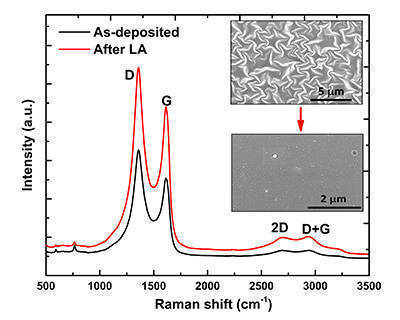
Beyond Graphene: Advances Make Reduced Graphene Oxide Electronics Feasible
"Researchers at North Carolina State University have developed a technique for converting positively charged (p-type) reduced graphene oxide (rGO) into negatively charged (n-type) rGO, creating a layered material that can be used to develop rGO-based transistors for use in electronic devices. "Graphene is extremely conductive, but is not a semiconductor; graphene oxide has a bandgap like a semiconductor, but does not conduct well at all so we created rGO," says Jay Narayan, the John C. Fan Distinguished Chair Professor of Materials Science and Engineering at NC State and corresponding author of a paper describing the work. But rGO is p-type, and we needed to find a way to make n-type rGO. And now we have it for next-generation, two-dimensional electronic devices." [...]
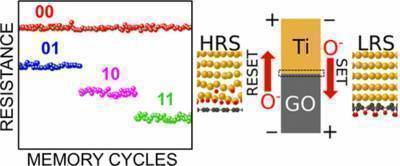
New ultrafast flexible and transparent memory devices could herald a new era of electronics
"An innovative new technique to produce the quickest, smallest, highest-capacity memories for flexible and transparent applications could pave the way for a future golden age of electronics. Engineering experts from the University of Exeter have developed innovative new memory using a hybrid of graphene oxide and titanium oxide. Their devices are low cost and eco-friendly to produce, are also perfectly suited for use in flexible electronic devices such as ‘bendable’ mobile phone, computer and television screens, and even ‘intelligent’ clothing. Crucially, these devices may also have the potential to offer a cheaper and more adaptable alternative to ‘flash memory’, which is currently used in many common devices such as memory cards, graphics cards and USB computer drives. The research team insist that these innovative new devices have the potential to revolutionise not only how data is stored, but also take flexible electronics to a new age in terms of speed, efficiency and power. The research is published in the leading scientific journal ACS Nano." [...]

Bias test to prevent algorithms discriminating unfairly
"COMPUTERS are getting ethical. A new approach for testing whether algorithms contain hidden biases aims to prevent automated systems from perpetuating human discrimination. Machine learning is increasingly being used to make sensitive decisions, says Matt Kusner at the Alan Turing Institute in London. In some US states, judges make sentencing decisions and set bail conditions using algorithms that calculate the likelihood that someone will reoffend. Other algorithms assess whether a person should be offered a loan or a job interview. But it is often unclear how these systems come to their conclusions, which makes it impossible to tell if they are fair ones. An algorithm might conclude that people from a certain demographic are less likely to pay back a loan, for example, if it is trained on a data set in which loans were unfairly distributed in the first place. “In machine learning, we have this problem of racism in and racism out,” says Chris Russell, also at the Alan Turing Institute." [...]

Faster page loads
"A webpage today is often the sum of many different components. A user’s home page on a social-networking site, for instance, might display the latest posts from the users’ friends; the associated images, links, and comments; notifications of pending messages and comments on the user’s own posts; a list of events; a list of topics currently driving online discussions; a list of games, some of which are flagged to indicate that it’s the user’s turn; and of course the all-important ads, which the site depends on for revenues. With increasing frequency, each of those components is handled by a different program running on a different server in the website’s data center. That reduces processing time, but it exacerbates another problem: the equitable allocation of network bandwidth among programs. Many websites aggregate all of a page’s components before shipping them to the user. So if just one program has been allocated too little bandwidth on the data center network, the rest of the page — and the user — could be stuck waiting for its component." [...]

Google Brain Wants Creative AI to Help Humans Make a “New Kind of Art”
"Machine-learning algorithms aren’t likely to put painters or singer-songwriters out of work anytime soon, to judge from their body of work to date. But Google Brain is developing tools that pair artists with deep-learning tools to develop novel artwork together, said Douglas Eck, senior staff scientist at the search giant’s artificial-intelligence research division, during the MIT Technology Review’s EmTech Digital conference on Tuesday. He hopes the platform, called Magenta, will allow people to produce completely new kinds of music and art, in much the way that keyboards, drum machines, and cameras did. Eck said that Magenta could serve a role analogous to that of Les Paul, who helped develop the modern electric guitar. But Eck said they want to keep artists in the loop to push the boundaries of the new tool in interesting ways, like a Jimi Hendrix who flips it upside down, bends the strings, and distorts the sound." [...]

Nanomagnets for future data storage
"An international team of researchers led by chemists from ETH Zurich have developed a method for depositing single magnetisable atoms onto a surface. This is especially interesting for the development of new miniature data storage devices. The idea is intriguing: if only a single atom or small molecule was needed for a single unit of data (a zero or a one in the case of binary digital technology), massive volumes of data could be stored in the tiniest amount of space. This is theoretically possible, because certain atoms can be magnetised in only one of two possible directions: “spin up” or “spin down”. Information could then be stored and read by the sequence of the molecules’ magnetisation directions. However, several obstacles still need to be overcome before single-molecule magnet data storage becomes a reality. Finding molecules that can store the magnetic information permanently and not just fleetingly is a challenge, and it is even more difficult to arrange these molecules on a solid surface to build data storage carriers. To address the latter problem, an international team of researchers led by chemists from ETH Zurich has now developed a new method that offers numerous advantages over other approaches." [...]

How Graphene Could Cool Smartphone, Computer and Other Electronics Chips
"With graphene, Rutgers researchers have discovered a powerful way to cool tiny chips – key components of electronic devices with billions of transistors apiece. “You can fit graphene, a very thin, two-dimensional material that can be miniaturized, to cool a hot spot that creates heating problems in your chip, said Eva Y. Andrei, Board of Governors professor of physics in the Department of Physics and Astronomy. “This solution doesn’t have moving parts and it’s quite efficient for cooling.” The shrinking of electronic components and the excessive heat generated by their increasing power has heightened the need for chip-cooling solutions, according to a Rutgers-led study published recently in Proceedings of the National Academy of Sciences. Using graphene combined with a boron nitride crystal substrate, the researchers demonstrated a more powerful and efficient cooling mechanism." [...]

Can robots write meaningful news?
"Robots and computers are replacing people everywhere; doctors, pilots, even journalists. Is this leading to a dystopian society, or could it be something positive? With this in mind, researchers from the Media Management and Transformation Centre (MMTC) at Jönköping International Business School, Jönköping University have launched the project DPer News (Digital Personalization of the News), with support from the Knowledge Foundation. Digitalization is the integration of digital technologies into everyday life, but it is also the process of moving to a digital business. The media industry, and news in particular, is the starting point for the Dper News project, but virtually all industries are facing digitalization." [...]
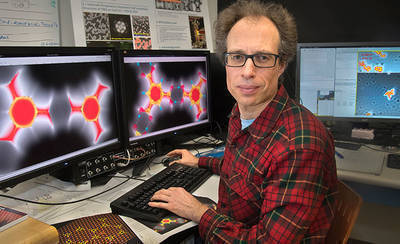
Next-Generation Software Supports Explorations Beyond the Nanoworld into the Intramolecular Picoworld
"For physicist Percy Zahl, traversing surfaces is not only a long-time hobby of his but also the focus of his research. An avid cyclist who is part of the Green Arm Bandits of the East End Cycling Team, he has pedaled more than 10,000 miles in 2016 alone, competing in races as close to home as the New York tri-state area and touring in places as far away as Chile. Weather permitting, he bikes the 20 miles it takes each day to make the round trip between his home and the U.S. Department of Energy’s (DOE) Brookhaven National Laboratory, where he covers terrain of a different kind—mapping the atomic structure and electronic properties of material surfaces through scanning probe microscopy (SPM). Since 2005, Zahl has been working as an associate scientist at Brookhaven’s Center for Functional Nanomaterials (CFN), a DOE Office of Science User Facility. He came to Brookhaven from a postdoc position at IBM Zurich, where SPM was founded, with the invention of the scanning tunneling microscope in 1981. In 1994, Zahl began developing control software for scanning tunneling microscopy (STM). At the time, he was attending the Institute for Solid State Physics at Leibniz Universität Hannover, working on his thesis with a group in Germany that had microscopes but lacked the financial means for a full-scale commercial system. This software later evolved into what is known today as Gnome X Scanning Microscopy, or GXSM, an open-source software that enables scientists to acquire and interactively visualize data from digitally controlled scanning probe microscopes and similar instruments, in real time and offline." [...]
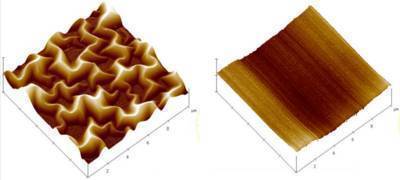
This advance could finally make graphene-based semiconductor chips feasible
"Researchers at North Carolina State University (NC State) have developed a layered material that can be used to develop transistors based on graphene — a long-sought goal in the electronics industry. Graphene has attractive properties, such as extremely high conductivity, meaning it conducts the flow of electrical current really well (compared to copper, for example), but it’s not a semiconductor, so it can’t work in a transistor (aside from providing great connections). A form of graphene called “graphene oxide” is a semiconductor, but it does not conduct well. However, a form of graphene oxide called “reduced graphene oxide” (rGO) does conduct well*. Despite that, rGO still can’t function in a transistor. That’s because the design of a transistor is based on creating a junction between two materials: one that is positively charged (p-type) and one that is negatively charged (n-type), and native rGO is only a p-type. The NC State researchers’ solution was to use high-powered laser pulses to disrupt chemical groups on an rGO thin film. This disruption moved electrons from one group to another, effectively converting p-type rGO to n-type rGO. They then used the two forms of rGO as two layers (a layer of n-type rGO on the surface and a layer of p-type rGO underneath) — creating a layered thin-film material that could be used to develop rGO-based transistors for use in future semiconductor chips." [...]
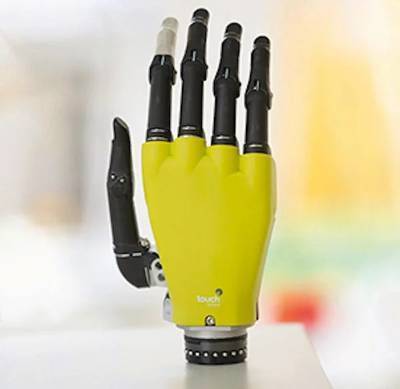
Solar-powered skin opens new possibilities for prosthetics
"A new way of harnessing the sun’s rays to power ‘synthetic skin’ could help to create advanced prosthetic limbs capable of returning the sense of touch to amputees. Engineers from the University of Glasgow, who have previously developed an ‘electronic skin’ covering for prosthetic hands made from graphene, have found a way to use some of graphene’s remarkable physical properties to use energy from the sun to power the skin. Graphene is a highly flexible form of graphite which, despite being just a single atom thick, is stronger than steel, electrically conductive, and transparent. It is graphene’s optical transparency, which allows around 98% of the light which strikes its surface to pass directly through it, which makes it ideal for gathering energy from the sun to generate power." [...]

Innovative software converts Wi-Fi data into energy savings
"For the first time in Canada, a University of British Columbia engineer has found a way to use Wi-Fi to determine the number of building occupants and adjust ventilation accordingly – saving energy without sacrificing air quality. “Every day, thousands of smartphones, laptops and tablets connect to the Wi-Fi network at UBC,” said Stefan Storey, who holds a master’s in mechanical engineering and a PhD in resource management and environmental studies from UBC. “Our Bridge software anonymously counts the number of wireless devices in each room and passes the counts on to UBC’s building control system, which then adjusts airflow through the relevant building, practically in real time.” Based on an occupant count, the control system can vary the airflow to a room, ramping it up for a busy lecture, or down during the times in between. UBC worked with Storey to test the technology at the Irving K. Barber Learning Centre library, which serves thousands of students and staff. They found that it reduced energy consumption by five per cent over a period of 12 months, while maintaining air quality and occupant comfort. David Woodson, UBC’s managing director, energy and water services, says the new system could help the university reduce greenhouse gas emissions by hundreds of tonnes and save as much as $100,000 in energy costs per year for core campus buildings. UBC is installing the technology in 10 more buildings over the next several months." [...]

Making America’s power grid much, much smarter
"Remember back in 2003 when overgrown trees hit a power line in Cleveland and cut electricity to 50 million people in two countries? Or how about the storm that disrupted service to 1.7 million customers in Australia in September after backup generators failed? A team of researchers from Vanderbilt, Washington State and North Carolina State universities are charged with reinventing and protecting America’s power grid, and they’re taking their first solutions on a demonstration tour. Stops include the 8th ACM/IEEE International Conference on Cyber-Physical Systems in Pittsburgh beginning April 18 and the 20th IEEE International Symposium on Real-Time Computing in Toronto beginning May 16. The idea is to build an underlying, open-source software platform to support decentralized applications that increase the power grid’s resilience and protect it from dangers ranging from terrorists to tree branches. The platform is also designed to quarantine problems while the rest of the system runs normally and to allow for seamless transition among wind and solar power, batteries, generators and traditional coal-fired and nuclear power plants as needed." [...]
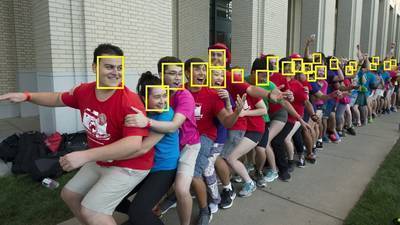
Finding faces in a crowd
"Spotting a face in a crowd, or recognizing any small or distant object within a large image, is a major challenge for computer vision systems. The trick to finding tiny objects, say researchers at Carnegie Mellon University, is to look for larger things associated with them. An improved method for coding that crucial context from an image has enabled Deva Ramanan, associate professor of robotics, and Peiyun Hu, a Ph.D. student in robotics, to demonstrate a significant advance in detecting tiny faces. When applied to benchmarked datasets of faces, their method reduced error by a factor of two, and 81 percent of the faces found using their methods proved to be actual faces, compared with 29 to 64 percent for prior methods." [...]
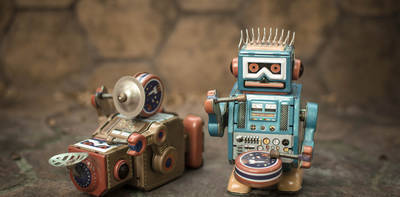
Why Asimov’s Laws of Robotics should be updated for the 21st century
"Many EU-funded projects are working towards advancing robotics to assist people with overcoming societal challenges, such as providing care for the elderly or providing disaster relief. An academic who worked on one such project has now argued that author Isaac Asimov’s Laws of Robotics are not the moral guidelines that they appear and should be updated. Isaac Asimov is one of the most celebrated sci-fi writers and arguably his most famous creation is the ‘Three Laws of Robotics.’ In a nutshell, these are: A robot may not injure a human being or, through inaction, allow a human being to come to harm; a robot must obey orders given to it by human beings except where such orders would conflict with the First Law and, a robot must protect its own existence as long as such protection does not conflict with the First or Second Law. Prof Tom Sorell of the University of Warwick, UK, has recently argued that Asimov’s three laws seem a natural response to the idea that robots will one day be commonplace and need internal programming to prevent them from harming people. However, he argues that whilst Asimov’s laws are organised around the moral value of preventing harm to humans, they are not as easy to interpret. Prof Sorell, an expert on robot ethics, worked on the EU-funded ACCOMPANY project that developed a robotic companion to help elderly people live independent lives." [...]
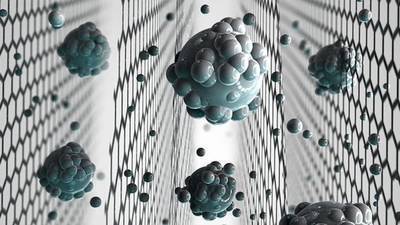
Graphene-based sieve turns seawater into drinking water
"The sought-after development could aid the millions of people without ready access to clean drinking water. The promising graphene oxide sieve could be highly efficient at filtering salts, and will now be tested against existing desalination membranes. It has previously been difficult to manufacture graphene-based barriers on an industrial scale. Reporting their results in the journal Nature Nanotechnology, scientists from the University of Manchester, led by Dr Rahul Nair, shows how they solved some of the challenges by using a chemical derivative called graphene oxide." [...]
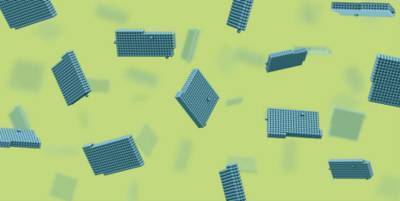
Platelets instead of quantum dots
"A team of researchers led by ETH Zurich professor David Norris has developed a model to clarify the general mechanism of nanoplatelet formation. Using pyrite, they also managed to confirm their theory. Scientists have been researching luminous coloured quantum dots (QDs) since the 1980s. These nanocrystals are now part of our everyday lives: the electronics industry uses them in LCD televisions to enhance colour reproduction and image quality. Quantum dots are spherical nanocrystals made of a semiconductor material. When these crystals are excited by light, they glow green or red – depending on their size, which is typically between 2 and 10 nanometres. The spherical forms can be produced in a highly controlled manner." [...]
A faster single-pixel camera
"Compressed sensing is an exciting new computational technique for extracting large amounts of information from a signal. In one high-profile demonstration, for instance, researchers at Rice University built a camera that could produce 2-D images using only a single light sensor rather than the millions of light sensors found in a commodity camera. But using compressed sensing for image acquisition is inefficient: That “single-pixel camera” needed thousands of exposures to produce a reasonably clear image. Reporting their results in the journal IEEE Transactions on Computational Imaging, researchers from the MIT Media Lab now describe a new technique that makes image acquisition using compressed sensing 50 times as efficient. In the case of the single-pixel camera, it could get the number of exposures down from thousands to dozens. One intriguing aspect of compressed-sensing imaging systems is that, unlike conventional cameras, they don’t require lenses. That could make them useful in harsh environments or in applications that use wavelengths of light outside the visible spectrum. Getting rid of the lens opens new prospects for the design of imaging systems." [...]
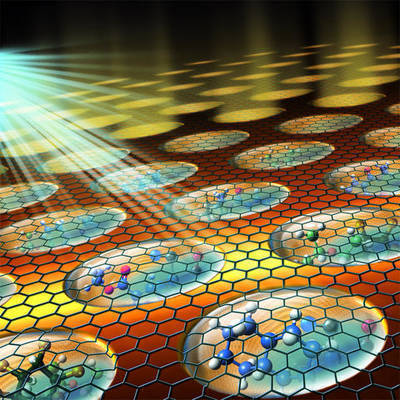
Graphene Lid Revitalizes Imaging Technique
"By capping liquids with graphene, an ultrathin sheet of pure carbon, researchers at the National Institute of Standards and Technology (NIST) and their colleagues have revitalized and extended a powerful technique to image surfaces. The graphene lids enable researchers for the first time to easily and inexpensively image and analyze liquid interfaces and the surface of nanometer-scale objects immersed in liquids. The new capability has the potential to advance the development of batteries, highly charged capacitors for power-grid technology, and new catalysts such as those used in the chemical industry. In the imaging technique, known as photoemission electron microscopy (PEEM), ultraviolet light or X-rays bombard a sample, stimulating the material to release electrons from a region at or just beneath its surface. Electric fields act as lenses, focusing the emitted electrons to create an image. Researchers have used the method for decades to discern such fine-scale features as the patterns of chemical reactions on the surface of catalysts, as well as the magnetic field structure of memory devices and the molecular architecture of biological compounds. But PEEM has typically been restricted to solid surfaces that are in a high-vacuum environment. The method hasn’t had the ability to study liquids and gases at ordinary pressures. A liquid sample, for instance, would evaporate and create sparks if directly exposed to the high vacuum in the PEEM setup." [...]
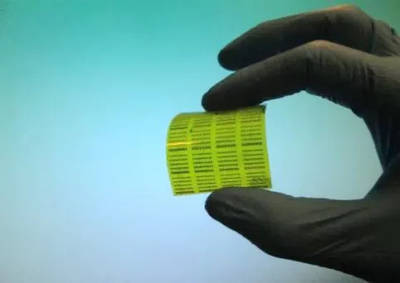
Streamlining Mass Production of Printable Electronics
" Memory devices -- as a subset of electronic functions that includes logic, sensors and displays -- have undergone an exponential increase in integration and performance known as Moore’s Law. In parallel, our daily lives increasingly involve an assortment of relatively low-performance electronic functions implemented in computer chips on credit cards, in-home appliances, and even smart tags on consumer products. While memory devices are becoming progressively more flexible, their ease of fabrication and integration in low performance applications have been generally been treated as being of secondary importance. But now, thanks to the work of a group of researchers at Munich University of Applied Sciences in Germany and INRS-EMT in Canada, this is about to change. Additive manufacturing, perhaps best known because of 3-D printing, allows for a streamlined process flow -- eliminating complex lithography and material removal steps at the detriment of feature size, which is in many cases not critical for memory devices in less computationally demanding uses. Inkjet printing is a common office technology that competes with laser printing. It offers the added benefit of a straightforward transfer from inkjet to roll-to-roll printing. In an article appearing this week in Applied Physics Letters, from AIP Publishing, the group presents a proof of concept, using resistive memory (ReRAM) that now paves the way for mass-producing printable electronics." [...]

The perfect pattern to trap light
"Superimposing two lattices of similar periods creates structures that researchers can design to control and localize light. Brighter LEDs and more efficient solar cells are two potential applications for A*STAR's research into lattice structures that can slow or trap light. Harnessing wave energy by localizing it and suppressing its propagation through a medium is a powerful technique. Now, Alagappin Gandhi and Png Ching Eng Jason from the A*STAR Institute of High Performance Computing have calculated a design that localizes light in tiny loops, within a two-dimensional structure created by merging two lattices of slightly differing periodicities1. The new technique is not limited to light, and may enable the design of systems that can precisely control wave energy in any realm and at any scale — sound, thermal, water, or even matter waves such as in Bose-Einstein condensates." [...]
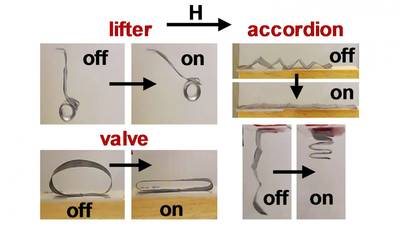
Researchers Control Soft Robots Using Magnetic Fields
"A team of engineering researchers has made a fundamental advance in controlling so-called soft robots, using magnetic fields to remotely manipulate microparticle chains embedded in soft robotic devices. The researchers have already created several devices that make use of the new technique. “By putting these self-assembling chains into soft robots, we are able to have them perform more complex functions while still retaining relatively simple designs,” says Joe Tracy, an associate professor of materials science and engineering at North Carolina State University and corresponding author of a paper on the work. “Possible applications for these devices range from remotely triggered pumps for drug delivery to the development of remotely deployable structures.”" [...]
Modelos 3D
Com a disponibilidade de ferramentas que permitem dar azo a nossa imaginação na criação de peças 3D e espaços como o thingiverse para as publicar, esta rubrica apresenta alguns modelos selecionados que poderão ser úteis.
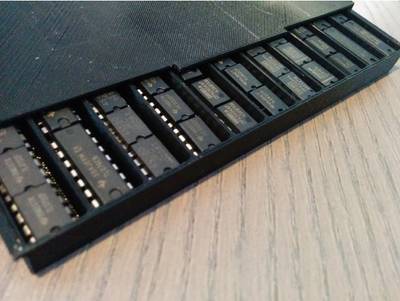
DIP IC Organizer
"Simple case for DIP chips. Simple to customize number of rows and depth in openSCAD." [...]
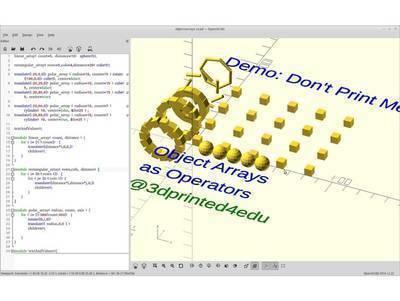
OpenSCAD - Array Utility
"This is a short tutorial on using for loops in a module to create an easy way to duplicate objects in OpenSCAD. It introduces the concept of an Operator and the children() operator." [...]
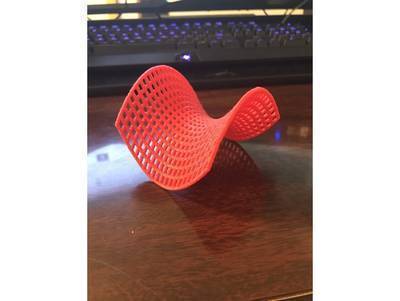
OpenSCAD Graph Generator
"This OpenSCAD program creates 3D graphs from two variable functions. These graphs are created by graphing points on a square grid and then connecting those points to form a mesh. All mathematical inputs must comply to the OpenSCAD language for math functions that can be found here: https://en.wikibooks.org/wiki/OpenSCAD_User_Manual/Mathematical_Functions" [...]
Documentação
A documentação é parte essencial do processo de aprendizagem e a Internet além de artigos interessantes de explorar também tem alguma documentação em formato PDF interessante de ler. Todos os links aqui apresentados são para conteúdo disponibilizado livremente pelo editor do livro.

Inside Microsoft Azure IaaS
"Free ebook (pdf) written by Ryan Irujo, Janaka Rangama, Pete Zerger & Anders Bengtsson that provides a hands-on guide to utilizing Infrastructure-as-a-Service (IaaS) resources in Azure, with a primary focus on Azure Virtual Machines. Additional content covered in the book includes Azure PowerShell, Azure Virtual Networking, Azure Storage, Connecting Azure to your Datacenter, Migration, and Backup & Disaster Recovery." [...]
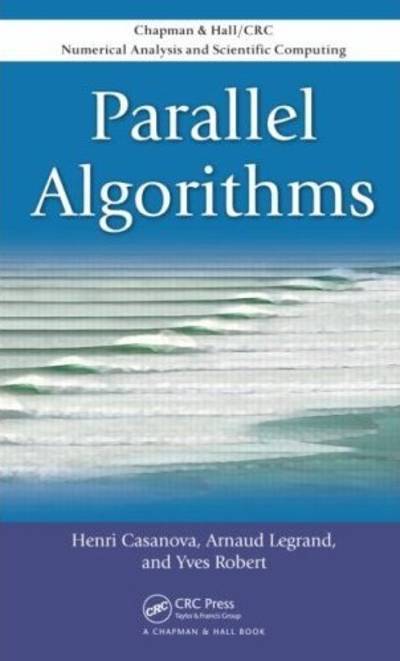
Parallel Algorithms
"The aim of this book is to provide a rigorous yet accessible treatment of parallel algorithms, including theoretical models of parallel computation, parallel algorithm design for homogeneous and heterogeneous platforms, complexity and performance analysis, and fundamental notions of scheduling. The focus is on algorithms for distributed-memory parallel architectures in which computing elements communicate by exchanging messages. While such platforms have become mainstream, the design of efficient and sound parallel algorithms is still a challenging proposition. Fortunately, in spite of the "leaps and bounds" evolution of parallel computing technology, there exists a core of fundamental algorithmic principles. These principles are largely independent from the details of the underlying platform architecture and provide the basis for developing applications on current and future parallel platforms. This book identifies and synthesizes fundamental ideas and generally applicable algorithmic principles out of the mass of parallel algorithm expertise and practical implementations developed over the last decades." [...]
Projetos Maker
Diversos Projetos interessantes.
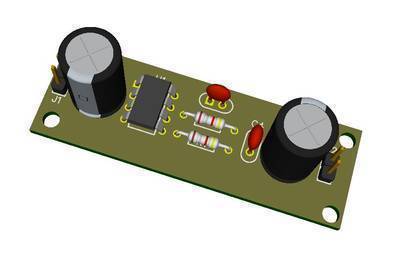
-5V @100mA Switched Capacitor Converter
"The circuit diagram presented here is about a negative voltage regulator. It is based on LT1054, which is a switched capacitor voltage converter with regulator from Texas instrument. This device has many advantages over other previously available switched capacitor voltage converters. It provides higher current and has lower voltage losses." [...]
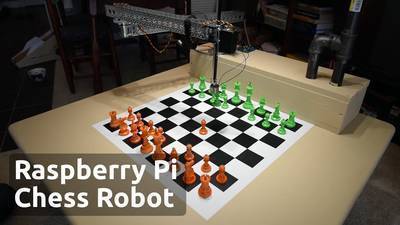
Raspberry turk
"The Raspberry Turk is a robot that can play chess. It is completely open source and the methods for building it are documented on this website. The project is written almost entirely in Python, runs on a Raspberry Pi, and incorporates aspects of computer vision, data science, machine learning, robotics, 3D printing, and of course chess. The Raspberry Turk is inspired by the Mechanical Turk, a chess-playing machine constructed in the late 18th century. I learned about this fascinating device years ago, and recently read The Turk by Tom Standage. After having recently studied machine learning, I decided a chess playing robot could be a fun project to apply some learned material. The Mechanical Turk won most of its games, touring through Europe and America and playing famous people of that time, such as Benjamin Franklin and Napoleon Bonaparte. The device, which was claimed to be a purely mechanical creation, remained a mystery to spectators for most of its lifetime. Famously, Edgar Allan Poe wrote an article speculating on how it could work." [...]
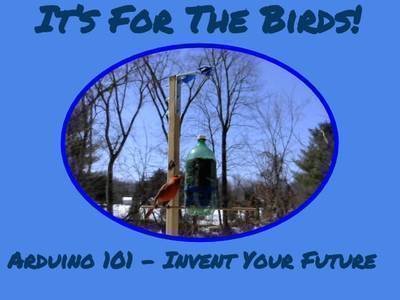
It's For The Birds!
"One way to measure the health of our climate and the ecosystem we live in is by measuring the size and variety of its fauna or animal population. Every winter, since 1987, the Cornell Lab of Ornithology conducts a massive citizen science effort called Project FeederWatch: Project FeederWatch is a winter-long survey of birds that visit feeders at backyards, nature centers, community areas, and other locales in North America FeederWatch data show which bird species visit feeders at thousands of locations across the continent every winter. The data also indicate how many individuals of each species are seen. This information can be used to measure changes in the winter ranges and abundances of bird species over time. This is our first year participating and we wanted to combine our interest in making and hacking, with our interest in nature and our participation in Project FeederWatch. So we decided to reinvent our future of bird watching and environmental monitoring with the Arduino 101! The Arduino 101 is ideal for this project because it combines the simplicity of the Arduino IDE to make our embedded programming easy, onboard capabilities such as Bluetooth LE with a wealth of sensors and breakout boards readily available. By embedding an Arduino 101 in a homemade bird feeder, we developed an experimental platform to measure weather parameters and monitor bird activity at our feeder. Adding in some exciting IoT technologies from Cloudinary and PubNub helped us to reinvent the future of environmental and ecosystem health monitoring!" [...]
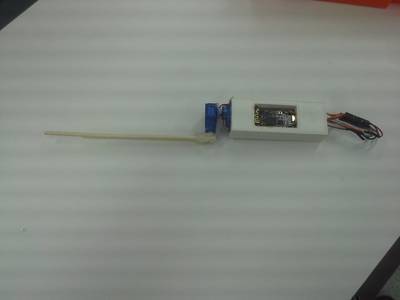
Self-Stabilizing Spoon for Parkinson's sufferers
"One day I saw people suffering Parkinson's disease on TV and felt bad for them. I googled if there was a decent solution for them and found a decent self-stabilizing spoon made for them. However, I wanted to try it out by myself with Curie Nano so that I can maybe find some things to improve while making it. I thought DIY self-stabilizing spoon can be the first step to improve already existing product to be cheaper, customizable (some patients may not even have fingers!) and durable. I'm NOT trying to copy or steal the idea by making this. (It's a disclaimer as I'm submitting this for Arduino 101 contest.) However, the prototype I've made is not perfect. The input values don't get smoothly processed to motor, making a clumsy move. I might get smoothed out if I used better algorithm but that's out of my reach for now. But it is still satisfactory to see it in action. Now let's briefly see how we can make this. The platform used in the above picture is Curie Nano, which is a recently released new chip from Intel." [...]
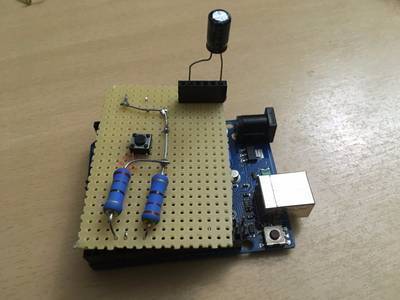
Simple capacitance meter
"This tool is used to test capacitors. It is really easy to make, as only additional hardware needed (besides the capacitor that will be tested) is 2x220ohm resistors." [...]

Arduino RFID and 5110 Screen/ID Card Reader(Rc522)
"Hi there, today we are going to use Rfid(RC522 with 5110 screen. But this sensor is different than others. Because we will use EEPROM. We want to; 1 - When we show our ID card we see the ''Welcome Ensar Levent'' on the 5110 screen. 2 - When we show our card second time, it doesn't read." [...]
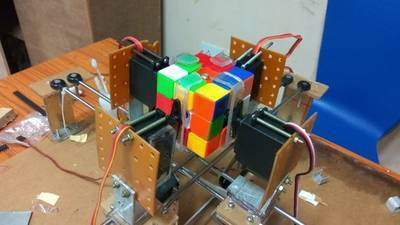
Rubics Cube Solver Bot
"Making an autonomous robot that solves a physical Rubik's cube. This is a project under Robotics Club, IIT Guwahati. It is made using simple material that can be found easily. Mainly we used Servo motors & an Arduino to control them, Acrylic sheets, a broken Mini Drafter, L-clamps and Dual Tapes! For getting the algorithm of solving the cube we used the cubejs library from github." [...]
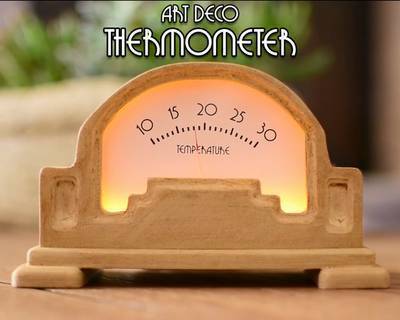
DIY Art Deco Analog Thermometer Using Arduino
"In this tutorial we are going to build this Art Deco style Analog thermometer! The design of this thermometer is fantastic in my opinion. It is based on the design of a commercial thermometer that was designed 100 years ago. I made some changes to the design in order to fit inside modern electronics, a photoresistor to detect darkness, some LEDs to illuminate at night, and of course an Arduino as the brains of the thermometer. I 3D printed the enclosure using wood filament. As you can see, the project is reporting the temperature, and in my opinion, it looks great. I love vintage objects and I am very excited now that I can make my own using my 3D printer! Let’s see how to build this project!" [...]
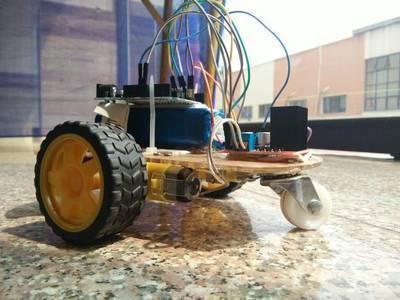
Gesture Hawk : hand gesture controlled robot using image processing as interface
"Gesture Hawk was showcased in TechEvince 4.0 as a simple image processing based human-machine interface. Its utility lies in the fact that no additional sensors or wearable except a glove is required to control the robotic car that runs on differential drive principle. In this instructable, we will take you through the working principle behind object tracking and gesture detection used in the system." [...]
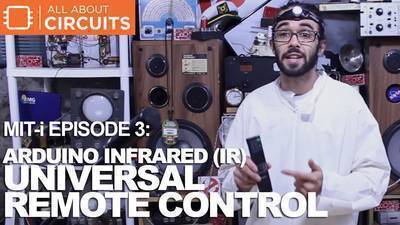
DIY Universal Remote with Arduino
"This Arduino Universal Remote Control allows your TV remote to control anything with an IR sensor attached to it! This project takes advantage of infrared transmitters and receivers that you can find around your house or old electronics that can be salvaged. By programming an Arduino to read the IR signal coming from your TV remote, you can make the universe yours!" [...]
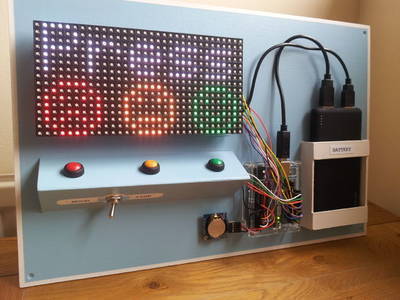
Arduino Mood Gauge With Clock
_"Here's my mood gauge. It started out as a 'I know what we need...' discussion in the office, but since making it I think it could also function as a child behaviour monitor for parents or a RAG/traffic light gauge for teachers - albeit an elaborate one. Quite simply, as illustrated by the animated gif above, you push a button to display the corresponding mood - so everyone who's looking will know what mood you're in (and will know to tread carefully if it's showing red). Additionally I've added a clock function as there were enough pins left over on the Arduino to do so. In-keeping with the 'mood' theme of this project I decided to the clock should show a 'mood' depending on what day of the week it is - obviously Monday is bad and Weekends are good!"_http://www.instructables.com/id/WiFi-Voice-Controlled-Robot-With-NodeMCU/ [...]
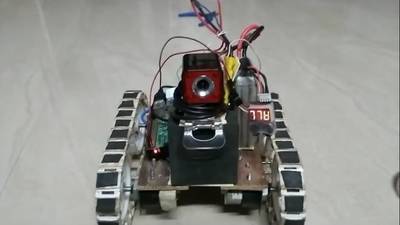
Raspberry Pi Rover (simple) Using Rpi , Arduino
"building an Autonomous rover has been a dream for me . it is not that easy to build a self driving vehicle without 3D sensors like lider , kinect ... etc . in this instructable , i will be teaching you the basic rover which can be controlled using wifi with a video feed" [...]

Si4703 FM Radio Arduino Uno Shield
"2 months ago I was made FM radio by TEA5767 chip ( Arduino Uno shield). I was used with TDA2822 sound amplifier chip. Everything it works, but I get information that it is another Si4703 FM board who had RDS. So I don't waste mine time and create another Si4703 FM radio." [...]

Smart Emergency Door Light W/Arduino
"Hi there! Today we are going to make a Smart Emergency Door Light. What will be the task? So you know, in the subway stations, Shopping Centers etc. have emergency doors and they are always open. So they are spending a lot of energy and money. Okey, What did i do? I made 'spend less energy' and of course 'Striking' exit door light." [...]
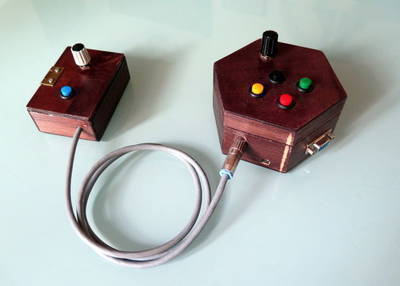
Arduino VGA Game Console
"I have done seven Instructables to reproduce some among the most popular old arcade games by means of a bare Arduino and few basic components. The main feature is the generation of a VGA signal, thanks to the VGAx library, published on GitHub by Sandro Maffiodo aka Smaffer. On the other end any games needed a slightly different configuration, i.e. a different number of buttons and/or potentiometers to drive it. Finally I decided to build a single game platform, and to correct the codes consequently, for all games, in particular: Pong, Tetris, Breakout, Snake, Bomber and a drawing toy inspired to Etch-a-Sketch. In this Instructable you can find three codes, (Tetris, Snake and a code for the other four games put together), and the instructions to build a “console” as the one shown in this page. I decided to split it in two units: one with a potentiometer and four buttons for the single player games, the other with one button and the second potentiometer for the second player (i.e. for Pong). Thus in total you need 5 buttons, two potentiometers, a VGA connector (DSUB15 female) and, of course, an Arduino! Most importantly, there is no need of supporting IC or special shields! You can see the complete setup in this video. The VGAx library allows to use four color with a resolution of 120 x 60 pixels, not many but enough for this retro-game “console”. The graphic is raw but all the games run smoothly. Simple sound effects are included too." [...]

Arduino Toolboxes : Analog Level Visualizer
"In This Video I Have Created A Visual Representation Of Analog Values At The Same Time Is Very Good For A lot Of Purposes Specially When The Analog Values Needed At the Same Time for Understanding The Signal And Calibration On Several Sensors At The Same Time .. etc. This Is One Of A Series Of Tools Aims To Enhance Working With Components And Sensors." [...]

WiFi Voice Controlled Robot With NodeMCU
"On my last tutorial, Voice Activated Control With Android and NodeMCU we explored how to develop our own App on an Android smartphone to control locally (using buttons or voice) smart home devices. But How about starting from there and instead home devices we control motors? And still better, how about having those motors driving a differential robot? That is exactly what we will develop here, a WiFi Voice Controlled Robot using as a controller, our old bud NodeMCU!" [...]
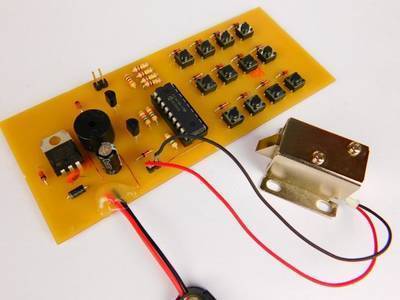
DIY Keypad Entry System with PIC16 Microcontroller and Solenoid
"Nothing is more irritating than someone going through your cupboards or your personal space. If you (like myself) feel that it needs to stop then worry no more! In this project, you will learn how to build a 12-key keypad entry system that only unlocks itself when the correct passcode has been entered. At the heart of the circuit is the PIC16F84 (but this could also be the PIC16F88 or the PIC16F819) which reads the key presses, and controls the solenoid and the beeper. Each key has a diode to prevent multiple key presses from causing interference and the microcontroller scans one row at a time. When the microcontroller detects that the enter key has been pressed it will check to see if the entered code is equal to the passcode. If the code matches the system, it activates the solenoid and this allows for the door, cupboard, or whatever you want to lock to open. The system releases the solenoid only when the micro switch has been activated, which is used to detect when the door has been closed. When buttons are pressed, the microcontroller also makes a short beep occur on the buzzer. If the wrong code is typed, the buzzer will make 3 beeps to indicate that the code is incorrect. If the code is correct, the beeper makes 9 short beeps and engages the solenoid to indicate success. The power regulation circuitry is provided by a 7805 with all the needed reverse protection, EMF protection, and smoothing. The buzzer and solenoid are also in parallel with diodes to prevent damage from occurring to the transistors that control them." [...]
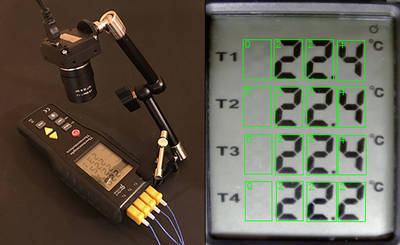
Dumb thermometer gets digital output
"Some time ago I purchased 4 channel thermometer. Soon after tried few optical character recognition (OCR) techniques on 7 segment symbols including pytesseract, they worked but I was not happy with results. Few days ago pyimagesearch published article detailing his approach. So I pushed it a bit forward and made solution more robust. Also added possibility to analyze video instead of single frame." [...]
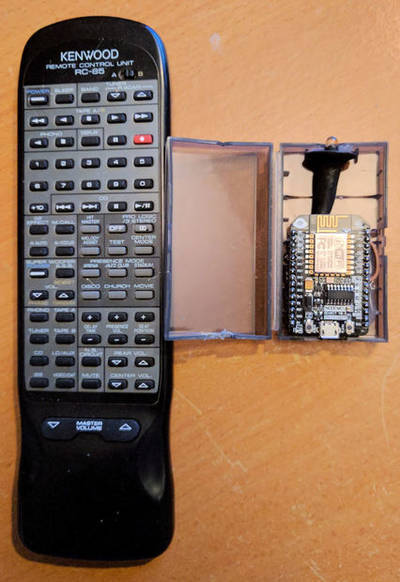
ESP IR Remote (for Kenwood Hi-Fi But Fully Customisable)
"I have always been interested in gadgets & music and if I was asked where the split is, I'd say 50-50. I've tinkered and hacked things together since I could hold a screwdriver; some successfully and others not so but I have never been put off by the challenge of creating something 'better suited' to my needs. I'm also lucky enough to have a wife that 'understands' me and allows me to tinker & hack, provided I do my fair share of the housework, etc. Back in the very early 90's, we 'invested', in a very expensive (for us), Kenwood M-85, Midi Hi-Fi system. It had Dolby surround, a CD, Graphic Equaliser and more inputs than I really needed at the time I could have bought a much cheaper system but I knew that if I spent the money on a good system to start with, it would last a few years. And after over 25 years on, it still works perfectly apart from the 'record deck', (which was just too tempting for my 2 young sons but has now been replaced by a Rega RP1) and the Graphic Equaliser, which just takes a while to warm up the display. I have done my best to keep it looking good too. For a few years I had it packed in the loft and substituted by a Panasonic Home Theatre System but as good as that was, it didn't have enough inputs for my musical/audio gadgetry. So last year I dug it back out of boxes and after building a custom shelving system for it, set it all up along with the RP1. But the remote had suffered a bit over the years and didn't want to play. I 'popped' it's shell and after a bit of cleaning with a fibre brush I noticed that one of the battery contacts had broken off the PCB and some of the internal plastic support had suffered too. I carefully replaced the battery contact with one from an old remote I had kicking around and plastic-welded a few new supports in place. Huzzah, it worked but it made me realise that this may be the weakest part of the system and getting a replacement was almost impossible unless I wanted to spend over £100 on a 2nd hand one from ebay or somewhere. So I needed to keep this one as safe as possible whilst I found a way to replicate the main controls. Which brings me to this Instructable. But before we start; I know there are many Instructables already for similar projects. However, I wasn't able to find one that gave full instructions on the coding or how exactly you are supposed to send them from the web page to the ESP and translate that code to an IR signal that will do what I wanted it to. Most references I have been able to find were either written or explained in terms that required a higher level of expertise than I have or just didn't go into enough detail for my comprehension. So after many hours of 'Googling', I finally managed to pull all of the info I could find and using a little bit of educated guessing, found a way to do what I wanted. I should also make it clear that I am quite lazy when it comes to engaging the grey matter and tend to only learn the bits that are important to what I am doing at the time. If some of the steps seem a bit disjointed, I apologise. It wasn't until a friend told me I should post this that I started making notes. I'm no expert at any of the following but have learned what I have from many better informed sources. If you need to ask questions, I will try to answer them as best I can or point you to a better source of information. I will try to include links where they're necessary and some images too. I will also try to include all of those who are due a credit, if I can still find the correct source. If I do miss a credit, please forgive me as I never started out to create an Instructable and in my laziness, didn't make notes of some of the sources. Enough of the preamble and on with the project." [...]

DIP switch egg timer
"Like Eggs? I do. I like them scrambled, poached, fried or hard boiled. In Taiwan hard boiled eggs are almost a staple food supplied in 7-11's, Family Mart, Ok Mart and a variety of other chain convenience stores throughout the country. They are usually called "Tea Eggs" because they are boiled slowly in a Tea Mixture that stains the shell brown and penetrates in inner goodness giving them a coffee colored look and slightly sweet flavor. So I decided to create a simple breadboard based Kitchen Egg Timer for those who like a perfect hard boiled Egg or if they prefer soft or somewhere in the middle. Most egg timers use a rotational variable resistor, which can be difficult to get the time you want unless you guesstimate it. So I opted for a 'hard wired' version using particular resistors and 555 timer programmable by a Dip Switch that allows you to select a timing period between 1 to 5 minutes. This Egg timer will be in our upcoming Breadboard Project Kit No3. called "Practical Devices" if you are unable to source the components, along with 5 other fun projects for everyday use." [...]
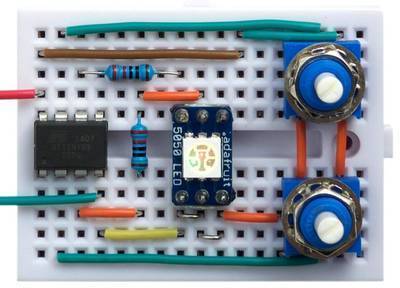
10 or 12-bit DAC from the ATtiny85
"This article describes how to get up to two 10 or 12-bit digital-to-analogue outputs from an 8-bit Timer/Counter, such as in the ATtiny85. To test the routine I built a circuit which allows you to vary the brightness of two LEDs with two potentiometers. The ATtiny85 provides two 8-bit Timer/Counters, so the digital-to-analogue PWM output it can produce is only 8-bit resolution. Sometimes, though, 8 bits isn't enough. For example, using an 8-bit DAC to vary the brightness of an LED will give noticable steps in brightness at the lower brightness levels. And, using it to create a variable voltage output gives you steps of about 0.02V, which may not be fine enough for a variable power supply. One solution is to choose a processor with a 16-bit Timer/Counter, such as the ATtiny84. However, you may already be comitted to using the ATtiny85, or like me, like to use the smallest possible processor for any application, so I decided to try and get a 10 or 12-bit analogue output from the ATtiny85." [...]

Build a PiKon
"The PiKon telescope was created for Sheffield University’s ‘Festival of the Mind’ in 2014. We wanted to show just what could be done with disruptive technologies such as 3D printing and Raspberry Pi computing. In particular we wanted to encourage the maker and amateur scientist to simply “have a go”. We never expected it to be so popular. From the onset at our Festival of the Mind talk we received considerable press attention and this WordPress blog jumped fro 6 hits a day to 1,500 hits a day." [...]

Desktop Arcade Machine : 3D Printed + RetroPie
"I always wished I had an arcade machine with real arcade joystick + buttons. Now that I have a 3D printer, I thought I should put it to good use and make myself a desktop arcade machine. I used TinkerCAD to do all the 3D modelling. My printer's bed size is 22cm x 22cm, so I had to break the design down into many pieces. Also, I wanted my arcade machine to have a lot of detail, so I also created things like a faux coin slot, etc. I will be sharing the files and instructions once I have fully completed my build. " [...]
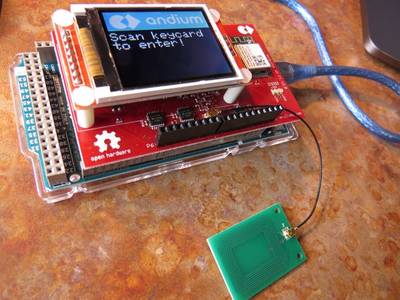
Arduino RFID Keycard Access
"Keys are so last century, and now that you can easily replicate a physical key just by snagging a photo it might be time to upgrade our locks! This project outlines a framework for you to get started implementing your own unique locking mechanisms. In this project you'll authenticate individuals using Mifare Classic RFID Tag UIDs and display a message on the LCD screen. Once you get this working we're curious to see where you take it next. We're thinking about maybe logging access stats to a google sheet, customizing the lighting in the room based off who just entered, or even 2 factor authentication door locks using a service like twilio! Imagine having to respond to a text from your car before you could get in? Let's dive in!" [...]
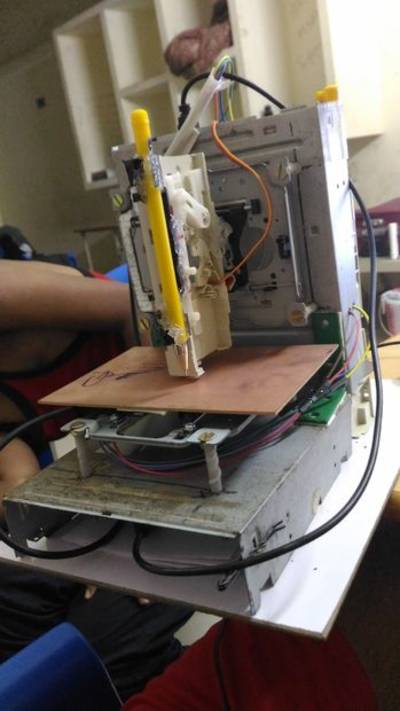
CNC machine
"The CNC machine is based on the working of the stepper motor and servo which are in interface with arduino and motor shield." [...]
That's all Folks!


